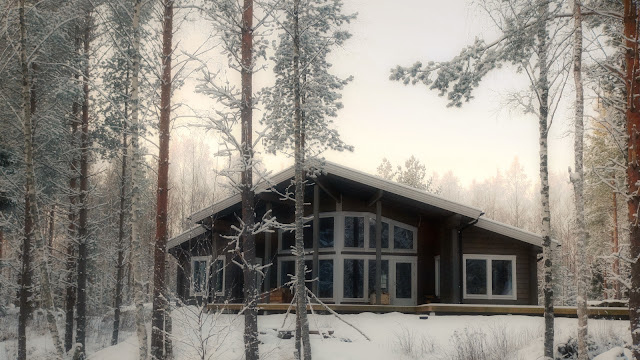#14 Material Choices and Interior Design

One of the main requirements of the house was that it should be able to be left on its own in all seasons in case we would not be around. I (used to) travel for work a lot, often months at a time and we also have family in other countries which means we might be away from home for extended periods. While measures such as the ability of draining the water pipes in winter are pretty obvious, I also wanted the rest of the house to be fine even when temperatures drop below freezing - also inside. On top of that, I wanted the best possible materials and finishes for the logs, walls and floors. For the floors we needed something that wouldn't interfere with the the efficiency of the underfloor radiant. For the walls and ceilings, the finishes didn't only have to be aesthetically pleasing, but also functional to protect the wood. Let's start with the inside walls: they're log on the outer perimeter of the house, and paneling matching the same dimensions as the log on the insi...




